
Download Free Apps & Games @ PHONEKY.com

Download Free Apps & Games @ PHONEKY.com
Subject: The Legends of Cricket
Replies: 22 Views: 10775
royal28 13.09.09 - 08:30am
In this topic we will discuss about the legends of retired and unretired legends of cricket. HAPPY BIRTHDAY TO SHANE WARNE *
HAPPY BIRTHDAY TO SHANE WARNE *
royal28 13.09.09 - 08:31am
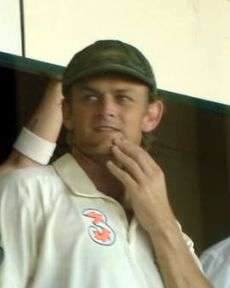 Adam Craig Gilchrist (born 14 November 1971), nicknamed Gilly or Church,[1] is a former Australian international cricketer.[2] He is an aggressive left-handed batsman and record-breaking wicket-keeper, who redefined the role for the Australian national team through his aggressive batting. He is considered to be one of the best wicket-keeper-batsmen in the history of the game.[3][4]
Adam Craig Gilchrist (born 14 November 1971), nicknamed Gilly or Church,[1] is a former Australian international cricketer.[2] He is an aggressive left-handed batsman and record-breaking wicket-keeper, who redefined the role for the Australian national team through his aggressive batting. He is considered to be one of the best wicket-keeper-batsmen in the history of the game.[3][4]
He holds the world record for the most dismissals by a wicket keeper in One Day International cricket and the most by an Australian in Test cricket.[5][6] His strike rate is amongst the highest in the history of both One-day and Test cricket and he currently holds the record for the second fastest century in Test cricket.[7] He is the only player to have hit 100 sixes in Test cricket.[8] His 17 Test and 16 ODI centuries are the most by a wicket-keeper.[9][10] He holds the unique record of scoring at least 50 runs in successive World Cup finals (in 1999, 2003 and 2007)[11] and is one of only three players to have won three titles.[12]
Gilchrist is renowned for walking when he considers himself to be out, sometimes contrary to the decision of the umpire.[13]
He made his first-class debut in 1992, his first One-Day International appearance in 1996 in India and his Test debut in 1999.[2] During his career, he played for Australia in 96 Test matches and over 270 One-day internationals. He was Australia's vice-captain in both forms of the game, captaining the team when regular captains Steve Waugh and Ricky Ponting were unavailable.[14][15]
Gilchrist retired from international cricket in March 2008.[16] However, he continues to play cricket for the Deccan Chargers in the Indian Premier League Twenty20 competition and replaced VVS Laxman as captain in 2009.[17] He led Deccan to the 2009 title. *
royal28 14.09.09 - 09:14am
George Bradley Hogg
D.O.B.
6-2-1971
Zimbabwe's Andy Flower in the 2003 World Cup. Flower leapt back, waited for the away-spin and then slumped, hideously bamboozled, as the ball fizzed straight through on to his stumps. Until that moment, Hogg's cricketing trajectory had been anything but straightforward. Like Stuart MacGill, he had spent years in the shadow of Shane Warne. He went to that World Cup hoping to pick Warne's brain, and unexpectedly found himself filling Warne's boots. His initial Test opportunity, at Delhi way back in 1996, also arose as Warne's stand-in. He made 1 and 4, took 1 for 69, and was promptly dumped for the next seven years and 78 games. No other Australian has waited so long between his first and second Tests; Alan Hurst.He was a great Chinaman
*
royal28 15.09.09 - 09:19am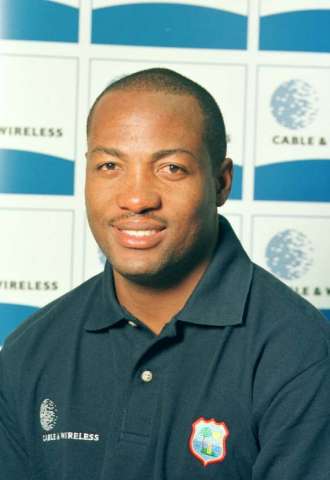 Brian Charles Lara, TC, OCC (born 2 May 1969, in Santa Cruz, Trinidad and Tobago) is a former West Indian cricketer, who is widely regarded as one of the greatest batsmen of all time.[1][2] He topped the Test batting rankings on several occasions and holds several cricketing records. He holds the record for the highest individual score in first-class cricket, with 501 not out for Warwickshire against Durham at Edgbaston in 1994, which is the only quintuple hundred in first-class cricket history.[3] He also holds the record for the highest individual score in a test innings after scoring 400 not out against England at Antigua in 2004.[4] Remarkably, he is the only batsman to have ever scored a hundred, a double century, a triple century, a quadruple century and a quintuple century in first class games over the course of a senior career.[5] [6] Lara also holds the test record of scoring most number of runs in a single over in a Test match, when he scored 28 runs off an over by Robin Peterson of South Africa in 2003.[7]
Brian Charles Lara, TC, OCC (born 2 May 1969, in Santa Cruz, Trinidad and Tobago) is a former West Indian cricketer, who is widely regarded as one of the greatest batsmen of all time.[1][2] He topped the Test batting rankings on several occasions and holds several cricketing records. He holds the record for the highest individual score in first-class cricket, with 501 not out for Warwickshire against Durham at Edgbaston in 1994, which is the only quintuple hundred in first-class cricket history.[3] He also holds the record for the highest individual score in a test innings after scoring 400 not out against England at Antigua in 2004.[4] Remarkably, he is the only batsman to have ever scored a hundred, a double century, a triple century, a quadruple century and a quintuple century in first class games over the course of a senior career.[5] [6] Lara also holds the test record of scoring most number of runs in a single over in a Test match, when he scored 28 runs off an over by Robin Peterson of South Africa in 2003.[7]
Lara's match-winning performance of 153 not out against Australia in Bridgetown, Barbados in 1999 has been rated by Wisden as the second best batting performance in the history of Test cricket, next only to the 270 runs scored by Sir Donald Bradman in The Ashes test match of 1937.[8] Muttiah Muralitharan, rated as the greatest Test match bowler ever by Wisden Cricketers' Almanack,[9] and the highest wicket-taker in both Test cricket[10] and in One Day Internationals (ODIs),[11] has hailed Lara as his toughest opponent among all batsmen in the world.[12] Lara was awarded the Wisden Leading Cricketer in the World awards in 1994 and 1995[13] and is also one of only three cricketers to receive the prestigious BBC Overseas Sports Personality of the Year, the other two being Sir Garfield Sobers and Shane Warne.[14] Brian Lara is popularly nicknamed as The Prince of Trinidad or simply The Prince. *
royal28 16.09.09 - 08:19am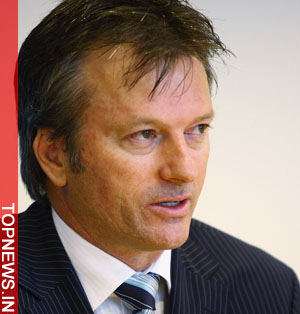 Stephen Rodger Waugh, AO (born 2 June 1965 in Canterbury, New South Wales) is a former Australian cricketer, and fraternal twin of former Australian cricketer Mark Waugh. Steve Waugh captained the Australian Test cricket team from 1999 to 2004. He is the most capped Test player in history with 168 appearances. He is known amongst friends as Tugga (as in tug of war), and amongst the public as Iceman for his ability to remain calm and cool in high-pressure situations throughout his career.[1] He is known for his philanthropic work, and he was named Australian of the Year in 2004.Waugh took over the captaincy of the one-day side in 199798, after captain Mark Taylor and vice-captain Ian Healy, the two oldest players in the team were dropped[62] following Australia's failure to qualify for the Australian tri-nations tournament in the 199697 season.[citation needed] Planning began for a more modern team for the 1999 Cricket World Cup,[62] with new wicket-keeper Adam Gilchrist chosen primarily on his batting skill in response to the use of Romesh Kaluwitharana by the successful 1996 Sri Lankan team.[citation needed] The new team made a difficult start, losing all four of its preliminary matches against South Africa[31][32] as Michael di Venuto, Tom Moody and Stuart Law were all tried as Mark Waugh's new opening partner.[63] Waugh himself struggled, scoring only 12 runs, including three ducks in his first six innings before scoring 45* in the last round-robin match to ensure Australia qualified for the finals ahead of New Zealand.[31][32]
Stephen Rodger Waugh, AO (born 2 June 1965 in Canterbury, New South Wales) is a former Australian cricketer, and fraternal twin of former Australian cricketer Mark Waugh. Steve Waugh captained the Australian Test cricket team from 1999 to 2004. He is the most capped Test player in history with 168 appearances. He is known amongst friends as Tugga (as in tug of war), and amongst the public as Iceman for his ability to remain calm and cool in high-pressure situations throughout his career.[1] He is known for his philanthropic work, and he was named Australian of the Year in 2004.Waugh took over the captaincy of the one-day side in 199798, after captain Mark Taylor and vice-captain Ian Healy, the two oldest players in the team were dropped[62] following Australia's failure to qualify for the Australian tri-nations tournament in the 199697 season.[citation needed] Planning began for a more modern team for the 1999 Cricket World Cup,[62] with new wicket-keeper Adam Gilchrist chosen primarily on his batting skill in response to the use of Romesh Kaluwitharana by the successful 1996 Sri Lankan team.[citation needed] The new team made a difficult start, losing all four of its preliminary matches against South Africa[31][32] as Michael di Venuto, Tom Moody and Stuart Law were all tried as Mark Waugh's new opening partner.[63] Waugh himself struggled, scoring only 12 runs, including three ducks in his first six innings before scoring 45* in the last round-robin match to ensure Australia qualified for the finals ahead of New Zealand.[31][32]
However, with Gilchrist's elevation to opener in the finals series, Australia defeated the South Africans 21.[64] Waugh scored 53 and 71 in his two innings, and ended the series with 181 runs at 22.63. He bowled only four overs and took a solitary wicket in the series, which was his first ODI wicket in over a year.[31]
Stencil drawing depicting Steve Waugh
Waugh scored steadily in the 199798 Test season against New Zealand and South Africa, getting to 80 three times in six Tests without going on to a century and averaging 40.89; Australia won both series. He bowled more often than in the preceding few years and took six wickets at 17.33.
The southern hemisphere season ended with Waugh leading his first overseas tour, a four-match ODI tour of New Zealand. He scored 112 runs at 37.33 and took three wickets at 42.0
He was also involved with the Australian Football side during the Asian Cup, assisting the team as a psychological mentor.
Following retirement, Waugh established the Steve Waugh Foundation. The foundation is aimed at children who have a disease, an illness or an affliction that does not meet the set criteria of other charitable organisations
*
royal28 17.09.09 - 09:24am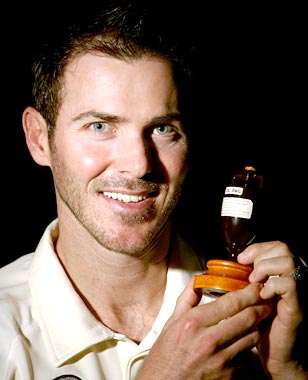 Damien Richard Martyn (born 21 October 1971 in Darwin, Northern Territory) is a former Australian cricketer. He played for the national team sporadically in 1992-1994 before becoming a regular ODI player in 1999-2000 and a regular Test player in 2001 until his retirement in late 2006. He was primarily a right-handed middle-order as a batsman with a 'classical' technique, known in particular for his elegant strokemaking square of the wicket on the off-side and through the covers. Martyn was also an occasional medium-pacer and distinguished fieldsman primarily in the covers who was capable of creating spectacular run-outs. He also very occasionally kept wicket at first-class level. He was named man of the series in the Border Gavaskar Trophy in 2004, to help Australia defeat India on the subcontinent for the first time in more than 30 years, and was named in early 2005 as the Australian Test player of the Year at the annual Allan Border Medal presentations. *
Damien Richard Martyn (born 21 October 1971 in Darwin, Northern Territory) is a former Australian cricketer. He played for the national team sporadically in 1992-1994 before becoming a regular ODI player in 1999-2000 and a regular Test player in 2001 until his retirement in late 2006. He was primarily a right-handed middle-order as a batsman with a 'classical' technique, known in particular for his elegant strokemaking square of the wicket on the off-side and through the covers. Martyn was also an occasional medium-pacer and distinguished fieldsman primarily in the covers who was capable of creating spectacular run-outs. He also very occasionally kept wicket at first-class level. He was named man of the series in the Border Gavaskar Trophy in 2004, to help Australia defeat India on the subcontinent for the first time in more than 30 years, and was named in early 2005 as the Australian Test player of the Year at the annual Allan Border Medal presentations. *
royal28 19.09.09 - 09:01am
.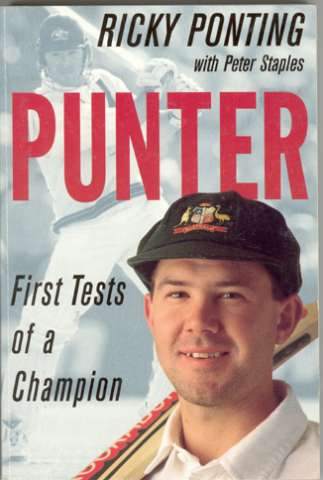 Ricky Thomas Ponting is the skipper of AUSTRLIAN Cricket Team,His date of Birth is December 1971.He is the Captain of Australian Cricket club Tusmania.He has aanounced his retiement from T20 Cricket because of a big pressure after the defeat of Ashes 2-1 by England this year,But therefore he is leading the team in a very good and aggresive style *
Ricky Thomas Ponting is the skipper of AUSTRLIAN Cricket Team,His date of Birth is December 1971.He is the Captain of Australian Cricket club Tusmania.He has aanounced his retiement from T20 Cricket because of a big pressure after the defeat of Ashes 2-1 by England this year,But therefore he is leading the team in a very good and aggresive style *
royal28 19.09.09 - 09:14am
Matthew Lawrence Hayden born on October 29, 1971, is an Australian and Queensland cricketer. He is a powerful left hand batsman, known for his ability to score quickly at both test and one day level, particularly over the mid on region and with the sweep shot. He is also a solid fielder in the slips or gully region. Hayden debuted for the Australian team in the 1993/94 season. He has always been a strong player at state level, but initially struggled at international level, until the 2001 series in India. Since then, he has been a regular in both the Test and one day sides.
Until recently, he held the world record for the highest Test score, 380, which he scored in Perth against Zimbabwe in 2003. It narrowly eclipsed the previous best, 375, held by Brian Lara of the West Indies. Lara, however, reclaimed the record with 400 at St Johns, Antigua on April 12, 2004 against England.
Hayden has been involved in the Australian side that won the 2003 World Cup, and the Test side that recorded the record number of consecutive wins. In 2001 he scored a then Australian record of 1391 runs in Test matches, and subsequently won the Allan Border Medal as the best Australian player of the year. Hayden was also one of Wisdens five 2003 Cricketers of the Year.
As of February 2004, he has played 50 Test matches, with a batting average of 58.28, including 17 hundreds and 14 fifties. In one day internationals, he has scored 4 hundreds and 20 fifties at an average of 42.27.
He indulged in the controversy that emerged from the Second Test, 2007-08 Border-Gavaskar Trophy racism charges pressed by Australia against India, and was one of the witnesses for Andrew Symonds charges against Harbhajan Singh. *
royal28 20.09.09 - 07:14am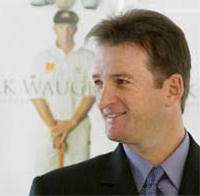 Mark Edward Waugh, AM (born June 2, 1965 in Canterbury, New South Wales) is a former Australian cricketer, who represented Australia in Test matches from early 1991 to late 2002, and made his One-Day International debut in 1988. Waugh is regarded as one of the most elegant and gifted stroke makers to ever play the game. His nickname is Junior as he is younger than his twin brother Steve by a few minutes.
Mark Edward Waugh, AM (born June 2, 1965 in Canterbury, New South Wales) is a former Australian cricketer, who represented Australia in Test matches from early 1991 to late 2002, and made his One-Day International debut in 1988. Waugh is regarded as one of the most elegant and gifted stroke makers to ever play the game. His nickname is Junior as he is younger than his twin brother Steve by a few minutes.
In 2005 Waugh was acknowledged for his services to cricket when he was appointed a Member of the Order of Australia (AM). He now works as a sports journalist for the Sydney Morning Herald, and has also worked for Fox Sports, Channel Seven show Sportsworld and as a Tour Guide for Australian Sports Tours.
Waugh took a record 181 catches in Test matches, the second highest for a non wicket-keeper. He primarily fielded in the second slip position whilst a fast bowler was operating. He would field at silly point whilst a spin bowler was operating, and then at first slip for a spinner following the retirement of Mark Taylor. He would also field at mid-wicket or short mid-wicket when he was not required in a close catching position, and also during ODIs.
*
royal28 20.09.09 - 07:18am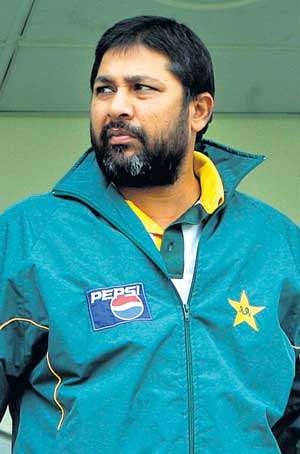 Inzamam-ul-Haq Multan, is a former Pakistan international cricketer who was national captain between 2003 and 2007. He is a right-handed batsman who has been regarded as one of the leading cricketers from Pakistan in modern times.
Inzamam-ul-Haq Multan, is a former Pakistan international cricketer who was national captain between 2003 and 2007. He is a right-handed batsman who has been regarded as one of the leading cricketers from Pakistan in modern times.
On October 5, 2007, Inzamam retired from International cricket following the second Test match against South Africa, falling three runs short of Javed Miandad as Pakistan's leading run scorer in Test cricket. Following his retirement, he joined the Indian Cricket League, captaining the Hyderabad Heroes in the inaugral edition of the Twenty20 competition. In the ICL's second Twenty20 competition he captained the La Badshahs, a team composed entirely of Pakistani cricketers.
In 2007, Inzamam joined the unsanctioned Indian Cricket League. In the inaugural competition, Inzamam captained the Hyderabad Heroes and scored 141 runs in 5 matches. In the 2008 competition in March, Inzamam captained the La Badshahs, composed entirely of Pakistani cricketers.
The move to the ICL has proved to be a controversial one for Inzamam. The PCB's stance on players joining unsanctioned leagues has meant that he has been banned from playing in any domestic competitions in Pakistan or any involvement with the international team.[21] However, given Inzamam's recent retirement, this is unlikely to affect him.
Inzamam captained Pakistan in 25 Tests, winning eight, drawing eight and losing nine. Only three players have captained Pakistan in more Test matches, but all have better win-loss records, and only Imran Khan has a lower win percentage than Inzamam. However, Inzamam held the captaincy until March 2007, the longest captaincy tenure since 1992 when Imran Khan retired.
Captaincy had a positive effect on Inzamam's batting, often leading by example in pressure situations, averaging greater as a captain (52) than without (50). In ODI's Inzamam used to have the highest average as captain[23] and is currently second on that list behind Ricky Ponting. After early failures in Australia, he took a depleted Pakistan side to India in 2005 and was important in securing a draw, winning the final test match from an unlikely position with 184*. He subsequently lead his side to an ODI success against West Indies (away), England (home) and Sri Lanka (away) as well as Test Series victories against England (home), India (home), Sri Lanka (away). Inzamam had seemed to have united the Pakistan side and victories lead them to 2nd place in the ICC Test Rankings and 3rd place in the ICC ODI Ranking. The latter part of Inzamam's tenure as Pakistan captain was less successful and the team was embroiled in many controversies culminating in a disappointingly early exit from the 2007 Cricket World Cup at the hands of lowly ranked Ireland.
In the 2007 Cricket World Cup, Inzamam captained the Pakistani team to its first loss to associate ICC member Ireland (on St Patrick's Day). This result and their previous loss to West Indies, led to them being knocked out of the tournament. A day later he announced his retirement from One Day International Cricket and resignation as Test captain. The announcement was made the same day that Bob Woolmer, Pakistan's coach, died in his hotel room in Kingston, Jamaica. He dedicated his final ODI to Woolmer to whom he shared a good relationship with for three years and affectionately called 'The Bob'. *
royal28 22.09.09 - 09:02am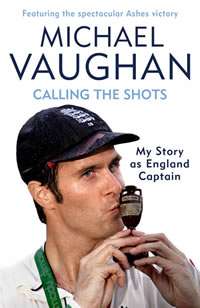 Michael Paul Vaughan OBE (born 29 October 1974 in Eccles, City of Salford, Greater Manchester, England) is a former cricketer who represented Yorkshire and England. A classically elegant right-handed batsman and useful occasional off-spinner, Vaughan was ranked the best batsman in the world following the 2002/3 Ashes, in which he scored 633 runs, including three centuries. Vaughan generally opened the batting, and forged a successful opening partnership with Marcus Trescothick, though he had often batted in the middle order for England.
Michael Paul Vaughan OBE (born 29 October 1974 in Eccles, City of Salford, Greater Manchester, England) is a former cricketer who represented Yorkshire and England. A classically elegant right-handed batsman and useful occasional off-spinner, Vaughan was ranked the best batsman in the world following the 2002/3 Ashes, in which he scored 633 runs, including three centuries. Vaughan generally opened the batting, and forged a successful opening partnership with Marcus Trescothick, though he had often batted in the middle order for England.
Known for his shrewd captaincy and man-management skills, Vaughan captained England in 51 Tests between 2003 and 2008, winning 26 (a national record) and losing 11; England won all seven home Tests of the 2004 summer under Vaughan, and the pinnacle of his captaincy career came with a 21 victory in the 2005 Ashes, England's first Ashes victory since 1986/7. However, a recurring knee injury, his decision to move down the batting order to accommodate other openers (Andrew Strauss and Alastair Cook) and the pressures of captaincy have taken their toll on Vaughan's batting during the latter part of his career: in Tests he averaged 50.95 when not captain, and 36.02 as captain. Vaughan announced his retirement from first-class cricket on 30 June 2009Injury troubles
A knee injury ruled Vaughan out of the first Test of England's tour of Pakistan in late 2005.[27] He played in the next two, scoring a half-century in the third,[28] as England lost the series 20. This broke England's unbeaten run of six consecutive Test series, which had taken them to second in the ICC Test Championship.
Vaughan's limited-overs batting had not lived up to his success in Tests: indeed, despite a total of 86 matches played, he has still never made a one-day international century. His highest ODI score is 90 not out, which he made off 99 ba11s against Zimbabwe.[11] In spite of this, on May 6, 2003, Vaughan was appointed captain of the England One Day International team, Nasser Hussain choosing to step down after the 2003 World Cup.[12] In July, he also took over from Hussain the captaincy of the Test side.[13] He suddenly became captain of the England Test team on July 28, 2003, after scoring 156 in the first Test against South Africa, when Nasser Hussain resigned after England had narrowly clung on for a draw. The England team promptly lost his first Test in charge by an innings and 215 runs, but went on to level the series 2-2.
Vaughan's batting initially suffered under the increased pressures of captaincy; in his first twelve matches as captain, his batting average was only 30.31. However, under Vaughan's captaincy, the England side became one of the most successful sides in world cricket. He benefited from the revolution begun by coach Duncan Fletcher and former captain Nasser Hussain, such as the awarding of central contracts to the core England players, and continued to forge a winning team. In 2003, after the drawn series against South Africa, England toured South Asia, beating Bangladesh but losing to Sri Lanka. But in 2004, England were unbeaten, winning eleven matches and drawing two, including an England record of eight consecutive victories. They beat the West Indies away for the first time since 1968. They then won all seven home Tests against New Zealand and the West Indies, before beating South Africa away for the first time since 1965. In the 2005 home season, England easily beat Bangladesh in a two-Test series, before facing Australia for the Ashes. Following a series defeat to South Africa, an emotional Vaughan stepped down as England captain on August 3, 2008 before the final test at the Oval, thanking those closest to him for their support.
[edit]
*
royal28 23.09.09 - 09:07am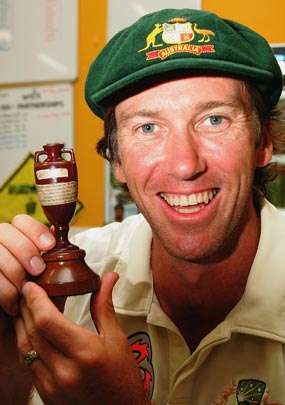 Glenn Donald McGrath AM (pro nounced [mf]) (born 9 February 1970 in Dubbo, New South Wales), nicknamed Pigeon[1] is a former Australian cricket player. He is one of the most highly regarded fast-medium pace bowlers in cricketing history[citation needed], and a leading contributor to Australia's domination of world cricket since the mid-1990s to early 21st century.[2] He holds the world record for the highest number of Test wickets by a fast bowler and is fourth on the all time list, with the top three wicket takers Muttiah Muralitharan, Shane Warne and Anil Kumble all being spin bowlers.[3] McGrath announced his retirement from Test cricket on the 23 December 2006.[4] His Test career came to an end after the 5th Ashes test in Sydney, whilst the 2007 World Cup marked the end of his one-day career.[5] Known throughout his career for maintaining a remarkably accurate line and length, McGrath's consistency enabled him to be one of the most economical fast bowlers of his time. McGrath currently plays for the Indian Premier League team of Delhi DareDevils and was one of the tournaments most economical bowlers in its first season.
Glenn Donald McGrath AM (pro nounced [mf]) (born 9 February 1970 in Dubbo, New South Wales), nicknamed Pigeon[1] is a former Australian cricket player. He is one of the most highly regarded fast-medium pace bowlers in cricketing history[citation needed], and a leading contributor to Australia's domination of world cricket since the mid-1990s to early 21st century.[2] He holds the world record for the highest number of Test wickets by a fast bowler and is fourth on the all time list, with the top three wicket takers Muttiah Muralitharan, Shane Warne and Anil Kumble all being spin bowlers.[3] McGrath announced his retirement from Test cricket on the 23 December 2006.[4] His Test career came to an end after the 5th Ashes test in Sydney, whilst the 2007 World Cup marked the end of his one-day career.[5] Known throughout his career for maintaining a remarkably accurate line and length, McGrath's consistency enabled him to be one of the most economical fast bowlers of his time. McGrath currently plays for the Indian Premier League team of Delhi DareDevils and was one of the tournaments most economical bowlers in its first season.
McGrath's bowling was not of express pace. Rather, he relied on unerring accuracy and subtle seam movement.[9] His height (195 cm), combined with a high arm action, allowed him to extract extra bounce from most pitches that often surprised batsmen. In the later years of his career, he developed as a swing bowler.[10]
His uncomplicated method and natural physical fitness were significant factors in the longevity of McGrath's career. In 2004, he became the first Australian fast bowler to play 100 Tests.[11] In the first innings of the ICC Super Series Test match in 2005, McGrath passed Courtney Walsh to become the greatest wicket-taker among fast bowlers in Test history.[12]
On 23 December 2006, McGrath announced his retirement from tests. His last test was the Fifth Ashes Test against England in Sydney in January 2007.[17][18] He has also retired from all forms of international cricket following the successful 2007 Cricket World Cup where he became the leading wicket taker in the history of the World Cup, while also being the top wicket taker with 26 and being named player of the tournament. *
royal28 25.09.09 - 07:47am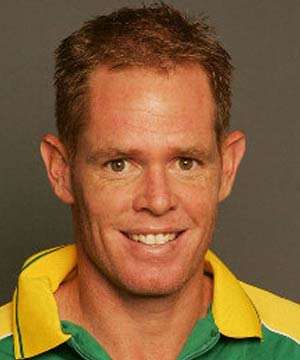 Shaun Maclean Pollock (born July 16, 1973 in Port Elizabeth) is a retired South African cricketer who is considered a bowling all-rounder. From 2000 to 2003 he was the captain of the South African cricket team, and also played for Africa XI, World XI, Dolphins and Warwickshire. He was also chosen as the Wisden Cricketer of the Year in 2003. He took over 400 test wickets and scored over 3,700 test runs in his 108 test matches. [1] On January 11, 2008 he announced his retirement from all forms of international cricket after his 303rd One Day International on February.Pollock comes from a family of mainly Scottish ancestry. His paternal grandfather, Andrew Pollock, who played for Orange Free State, was born in Edinburgh.[8] He is married to Patricia Trish Lauderdale and has two daughters, Jemma and Georgia. Jemma was born in August 2003, and Georgia in July 2006. Lauderdale was a finalist in the Miss South Africa pageant in the early '90s and also worked for MTN, a South African telecom company.[9] He is a teetotaller. [10] Pollock is a graduate of the University of Natal with a bachelor's degree in commerce. *
Shaun Maclean Pollock (born July 16, 1973 in Port Elizabeth) is a retired South African cricketer who is considered a bowling all-rounder. From 2000 to 2003 he was the captain of the South African cricket team, and also played for Africa XI, World XI, Dolphins and Warwickshire. He was also chosen as the Wisden Cricketer of the Year in 2003. He took over 400 test wickets and scored over 3,700 test runs in his 108 test matches. [1] On January 11, 2008 he announced his retirement from all forms of international cricket after his 303rd One Day International on February.Pollock comes from a family of mainly Scottish ancestry. His paternal grandfather, Andrew Pollock, who played for Orange Free State, was born in Edinburgh.[8] He is married to Patricia Trish Lauderdale and has two daughters, Jemma and Georgia. Jemma was born in August 2003, and Georgia in July 2006. Lauderdale was a finalist in the Miss South Africa pageant in the early '90s and also worked for MTN, a South African telecom company.[9] He is a teetotaller. [10] Pollock is a graduate of the University of Natal with a bachelor's degree in commerce. *
royal28 25.09.09 - 07:54am Shoaib Akhtar (Punjabi, Urdu: ; born 13 August 1975 in Rawalpindi, Punjab) is a Pakistani cricketer, and is one of the fastest bowlers in the world, earning him the name Rawalpindi Express. He set a world record by clocking 160.9 km/h (100 mph) twice. His ability to bowl fast yorkers, well disguised slow ba11s, swinging deliveries (including reverse swing), and sharp bouncers have made him lethal even on dead pitches.
Shoaib Akhtar (Punjabi, Urdu: ; born 13 August 1975 in Rawalpindi, Punjab) is a Pakistani cricketer, and is one of the fastest bowlers in the world, earning him the name Rawalpindi Express. He set a world record by clocking 160.9 km/h (100 mph) twice. His ability to bowl fast yorkers, well disguised slow ba11s, swinging deliveries (including reverse swing), and sharp bouncers have made him lethal even on dead pitches.
However, he has never been far from controversy, often accused of not being a team player. Shoaib was sent back home from a tour in Australia in 2005. A year later he was embroiled in a drug scandal after testing positive for a banned substance. However, the ban imposed on him was lifted on appeal. In September 2007, Shoaib was banned by the PCB for an indefinite period for the alleged brawl with his team-mate Mohammad Asif.[1] On 1 April 2008 Shoaib was banned for five years for publicly criticizing the policies of the Pakistan Cricket Board.[2] As of October 2008, the La High Court has suspended the 5 year ban until the hearing for the case takes place and Shoaib has been named in the 15-man squad for the Twenty20 Quadrangular Tournament in Canada.Shoaib made a strong comeback in his first game in the IPL for the Kolkata Knight Riders against the Delhi Daredevils. Defending a low score of 133, Shoaib took four top order wickets which ultimately led to the Daredevils being restricted to 110. He ended with figures of 4-11 from three overs, a performance which earned him the player of the match award.[7][8] Shoaib denied that he had any point to prove with his performance, stating, I just wanted to win the game. Knight Riders' captain Sourav Ganguly also acknowledged Shoaib's performance, He came to the country with lots [of things] happening behind him...But he showed a lot of character.[9] It has been widely reported that the Knight Riders have released Akhtar from his IPL contract due to his injury history but the Knight Riders' officials have denied these reports and said they are still in talks with the fast bowler
Shoaib has played for three counties in English county cricket: Somerset (2001), Durham (2003 and 2004) and Worcestershire (2005). He did have his moments of success (for example, taking 5-35 for Durham against Somerset in the National League in 2003, and claiming 6-16 in the same competition for Worcestershire against Glamorgan two years later) but he also suffered from fitness problems, as well as a perception that he was less than interested in his task. This was particularly the case at Worcestershire: chairman John Elliott said Players like that are no good to our club. In fact, Shoaib has been no good for any club he's been at. He's a superstar and just does what he wants.
*
royal28 27.09.09 - 07:44am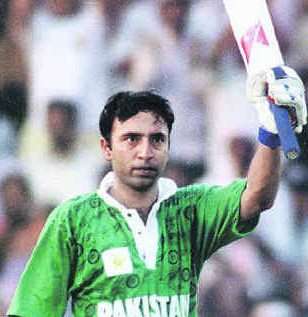 Saeed Anwar (Urdu: , born September 6, 1968 in Karachi, Pakistan) is a former Pakistani opening batsman. A stylish left-hander, Anwar is most notable for scoring 194 runs against India in Chennai, a record total in ODI cricket, equalled by Zimbabwean opener Charles Coventry in August 2009.An opening batsman capable of dismantling even the best bowling attacks, Anwar was an attacking batsman in one-day matches and once settled in Test matches, scored quickly and all over the field. His success came from good timing and wrist flicks rather than physical power, and Anwar became famous for his trademark flick. He was able to lift a ball that had pitched outside off stump for six over midwicket. Anwar's timing and ability to score quick runs made him a crowd favourite. He was named as a Wisden Cricketer of the Year in 1997.
Saeed Anwar (Urdu: , born September 6, 1968 in Karachi, Pakistan) is a former Pakistani opening batsman. A stylish left-hander, Anwar is most notable for scoring 194 runs against India in Chennai, a record total in ODI cricket, equalled by Zimbabwean opener Charles Coventry in August 2009.An opening batsman capable of dismantling even the best bowling attacks, Anwar was an attacking batsman in one-day matches and once settled in Test matches, scored quickly and all over the field. His success came from good timing and wrist flicks rather than physical power, and Anwar became famous for his trademark flick. He was able to lift a ball that had pitched outside off stump for six over midwicket. Anwar's timing and ability to score quick runs made him a crowd favourite. He was named as a Wisden Cricketer of the Year in 1997.
Saeed Anwar's career performance graph.
Anwar was the first Pakistani batsman to score a century against India on Indian soil in a one-day match. He has the highest Test batting average (59.06) of any Pakistani against Australia, and once scored three consecutive centuries against them. He scored a classic century against South Africa in Durban, which allowed Pakistan to win a Test match for the first time in South Africa.
On May 21, 1997 in Chennai, Anwar scored 194 against India in an ODI match.[1] This was the highest individual score by any batsman in the world. Charles Coventry equalled the feat on August 16 2009, against Bangladesh.[2]
Anwar is a member of the exclusive club of batsmen who have scored three successive hundreds in ODIs, with hundreds against Sri Lanka, West Indies and Sri Lanka during the 199394 Champions Trophy in Sharjah. He scored two successive hundreds on three other occasions in his career, and was the first batsman to complete this feat in ODIs.Anwar holds the highest individual score in an ODI match (194). He has scored two or more successive hundreds on four occasions. He holds the highest Test batting average (59.06) of any Pakistani against Australia in Test matches, and made 20 hundreds in one day internationals as a Pakistan opening batsman.
*
royal28 27.09.09 - 07:52am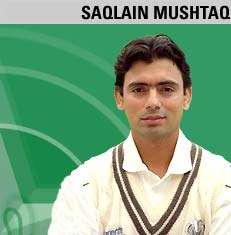 Saqlain Mushtaq (Urdu: ) (born December 29, 1976 in La , Punjab) is a Pakistani cricketer, regarded as one of the finest off spin bowlers of all time.[1] He is best known for pioneering the doosra, which he employed to great effect during his career. Saqlain has not been active in international cricket since 2004.
Saqlain Mushtaq (Urdu: ) (born December 29, 1976 in La , Punjab) is a Pakistani cricketer, regarded as one of the finest off spin bowlers of all time.[1] He is best known for pioneering the doosra, which he employed to great effect during his career. Saqlain has not been active in international cricket since 2004.
Saqlain made his international debut in September 1995 playing against Sri Lanka at Peshawar.[2] He picked up four wickets at an average of 26.75 in the first test of the series.[3] The highlight of his Test career came in the away series against India in January/February 1999, where he achieved his first ten wicket haul in a test match.[4] In the first test, with India needing only 17 runs to win, Saqlain effectively sealed Pakistan's win by taking the wicket of Sachin Tendulkar who had scored 136.[5] He ended the series with excellent figures, taking twenty wickets at an average of 20.15, which earned him the Man of the Series award.Saqlain is credited with the invention of the doosra, an off-spinner's delivery which is bowled with an action very similar to that of an off-break.[8] However, it spins in the opposite direction (i.e. from the leg side to the off side), easily confusing batsmen, making it a very effective weapon.[15] Saqlain became well-known for this variation ball, which was integral to his success, although he received criticism for overusing it.[2]
His other variation was the arm-ball, which again uses a similar action to the off-break, but causes the ball to go straight on without turning.[citation needed]
During his time at Surrey, Saqlain worked on developing new deliveries which he calls the teesra and the chotha.[16] However little else is known about these deliveries
After his major injury in 2004, Saqlain spent almost three years out of cricket[12], actively promoting the religion of Islam in local communities.
After marrying a British citizen, Saqlain gained a British passport, which made him eligible to play for England after a four-year qualification period that ended in April 2008. *
royal28 6.10.09 - 03:40pm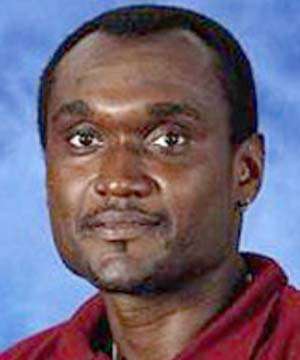 Carl Llewellyn Hooper (born December 15, 1966 in Georgetown, Guyana) is a former West Indian cricket player and captain.
Carl Llewellyn Hooper (born December 15, 1966 in Georgetown, Guyana) is a former West Indian cricket player and captain.
He was a right-handed batsman and off-spin bowler, who came to prominence in the late 1980s in a side that included such phenomenal talent as Gordon Greenidge, Desmond Haynes, Malcolm Marshall and Courtney Walsh and represented the West Indies over a 21-year international career.
His highest innings score of 233 was made during a Test series in India in 2001. He has made 5762 runs in his Test cricket career. Hooper could be an erratic Test batsman, as his low average of 36.46 over 102 Tests shows. In ODI play, Hooper's aggressive style of batting fared better: he averaged 35.34 off 227 matches.
Hooper represented Guyana at local first-class level, and played English county cricket for Kent and Lancashire. In 2003, Hooper became only the second player to have scored a century against all 18 county teams.[1]
Hooper holds the accolade of being the first cricketer in the world to have scored 5000 runs, taken 100 wickets, held 100 catches and received 100 caps in both ODIs and Tests, a feat only matched since by Jacques Kallis. [2] In his autobiography, Steve Waugh writes that quickness of feet and sweet yet brutally efficient stroke play were Hooper's trademarks.[3] He was routinely prematurely dismissed, however, after losses in concentration.
Shane Warne also thought very highly of Hooper's footwork and, in 2008, named him among the top 100 cricketers of his time, citing in particular his ability to disguise his dances down the track. Warne felt that determining when a batsman was going to give the charge was one of the most important things for a spinner, and that Hooper was the best at making it indeterminable. During the 1995 series, he wrote, this really nagged away at me, because I couldn't spot any of the usual clues even though I knew there had to be a sign that would give him away. On a number of occasions, I stopped at the point of delivery to see if he was giving anything away with his footwork. Most batsmen would be looking to get out of their ground at that point, whereas Hooper just stayed set. In the end, after watching him closely time after time, I managed to crack it. When he wanted to hit over the top, he just looked at me instead of tapping his crease as usual and looking down. Of course, my knowing what he was going to do did not always stop him from doing it.[4]
Hooper was also a strong slip fielder, usually at second slip. He took numerous catches from the likes of Ambrose and Walsh.
He is one of only 3 players to have scored centuries against 18 different English county sides. *
royal28 9.10.09 - 01:25pm
Stephen James Harmison MBE (born 23 October 1978, Ashington, Northumberland) is an England cricketer, a leading Test match fast bowler and a two-time Ashes winner. He plays county cricket for Durham. With his height (6'4) he can extract pace and bounce from most pitches. While poor form led to him being dropped from the team in New Zealand in 2007, he returned to the England side in 2008 against South Africa.Steve Harmison was first selected for an England squad in May 2000 during the tour to England by Zimbabwe, but did not play. As part of an ECB National Academy touring team that also contained Andrew Strauss, Ian Bell and Robert Key, Harmison showed clear signs of his ability in the tour of Australia in 200102. In August 2002, Harmison made his Test match debut at Trent Bridge against India, replacing the injured Simon Jones.
Originally lacking somewhat in control, he bowled seven consecutive wides in the first match of the tour of Australia, against the ACB Chairman's XI's at Lilac Hill in 2002. However, promising performances later in the tour saw him named in the World Cup squad, although he wasn't used in any of the matches. He was then awarded with a six month central contract by the ECB, but this was not renewed in September 2003.
Despite media complaints about his ability, he was named in the England squad for the winter tour to Bangladesh and Sri Lanka, partially due to injuries to other players. Harmison gave a man-of-the-match performance in the opening Test against Bangladesh, taking 9 wickets for 79 on a slow wicket, before succumbing to a back injury and missing the matches against Sri Lanka. Despite the injury, he'd done enough to be selected for the winter tour to the West Indies, and it was there he sealed his arrival, taking 7 wickets at the cost of just 12 runs as the West Indies collapsed to their lowest ever Test total of 47 all out. Harmison went on to win the Man-of-the-Series award after taking 23 wickets in the four Tests.ODI retirement and Sri Lanka
On 21 December 2006, three months before the 2007 Cricket World Cup, Harmison announced his retirement from One Day International cricket after being left out of the squad for the one-day series in Australia. In October 2007, Harmison travelled to South Africa to play domestic cricket before heading to Sri Lanka as part of the England Test squad.[2] After a shaky start, however, he suffered a back injury on the first day of the second warm up match, having taken one wicket.[3] He was not included in the squad for the first test, however he took three wickets in the second.[4] On 21 August 2008, it was announced that Harmison would return to playing One Day International cricket against South Africa.[5]
*
royal28 17.04.10 - 01:55pm
Lee is a fast bowler, one of the fastest the game has known, and at his peak was capable of bowling at 161 km/h (100.05 mph). Lee's fastest recorded delivery to date is 160.8 km/h (99.9 mph) which he bowled in his first over on March 5, 2005 at Napier, New Zealand against Craig .[3]
Lee ranked with Pakistani bowler Shoaib Akhtar as the fastest bowler in contemporary cricket during most of this decade.[4] Akhtar's delivery at 161.3km/h (100.23mph) stands as the fastest recorded to date.[5]
Early in his career, Lee was reported for a suspected illegal bowling action, but was cleared.[6] He was also criticised in early 2005 for bowling a series of beamers at batsmen during ODIs, at a rate which lead some to claim he was deliberately bowling illegal head high full tosses at batsmen.[7][8]
Lee is at his most effective on the pitches of the southern hemisphere, where the pitches have greater bounce. In the northern hemisphere, he has taken 53 wickets in 19 Tests at an average of 42.11. In the southern hemisphere, he has taken 178 wickets in 40 matches at 28.48. He has had the most success against the West Indies and New Zealand, averaging in the low twenties. He averages more than 40 against England, Bangladesh and Pakistan, and in the 30s against other teams.[9]
[edit] Childhood and early career
Lee is the second of three sons born to Bob, a metallurgist and Helen (ne Buxton), a piano teacher.[10] He has two brothers, the elder being former Australian all rounder and New South Wales Blues captain Shane Lee. His younger brother Grant played cricket for New South Wales at the under-19 level, and is now an accountant. Lee attended Balarang Public School and Oak Flats High School, which later named its cricket ground in his honour. His nickname 'Bing' refers to 'Bing Lee', after a chain of electronics stores in New South Wales.
The brothers enjoyed soccer, basketball and skiing and were encouraged to play the piano by their mother (Grant is a qualified pianist).[11] Brett was introduced to the game of cricket at the age of eight by his brother Shane. He played his first formal game of cricket for the Oak Flats Rats where he took 6/0 from one over or 6 wickets for 0 runs, all of his wickets being bowled.[citation needed] At sixteen years of age, Lee began playing first grade cricket for Campbelltown, where he managed to claim the wickets of a few New South Wales cricketers. He later joined Mosman, where at one point, he shared the new ball with Shoaib Akhtar.[12] He still lives on the Lower North S of Sydney today, in the suburb of Lane Cove.
Lee also played for the Australian Under 17 & 19 teams and was awarded a scholarship to attend the Australian Cricket Academy.
In March 1994, Lee was forced out of the Australian under-19 team to tour India due to stress fractures in his lower back. He recovered and made his first-class debut for New South Wales against Western Australia in a Sheffield Shield match as a 20-year old in the 199798 season, playing one match and taking 3/114.[13]
One month later, Lee was chosen to represent the Australian A team on a tour to South Africa. He claimed two wickets but in that very match, stress fractures in his back from the previous injury had re-opened and Lee was in a back brace for over three months. When he turned twenty-one, Lee moved to Sydney to be closer to work.[citation needed]
During the 1997-98 season, he played in five of the ten Sheffield Shield games, taking fourteen wickets at 30. He finished outside the top 20 in both the wicket taking list and the bowling averages.[14]
In 1999, during a Sheffield Shield match at Perth, Lee bowled a spell against the Western Australian batsmen, compared the fastest bowling seen in Australia since the days of Jeff Thomson back in the 1970s. From that point, Australian captain Steve Waugh and then vice-captain Shane Warne began pushing for Lee's inclusion in the Test team.
[edit] Test career
[edit] Early Test career
By the late 1990s there were calls for Lee to be included in the national squad. He was eventually chosen in the final 14 for the Test series against Pakistan in 1999 but failed to make the final 11. By the time the Test series against India came around, he was twelfth man. However, he duly made his Test debut for Australia in December 1999 against the touring Indians, becoming Australia's 383rd Test cricketer.
Bowling first change, Lee took a wicket in his first over in Test cricket when he bowled Sadagoppan Ramesh with his fourth delivery. He also captured Rahul Dravid in his first spell before returning to take three wickets in six ba11s to finish the innings with figures of 5/47 from 17 overs. Australia had batted first, and Lee had earlier made 27 runs. Lee took thirteen wickets in his opening two Tests at the low average of 14.15.
Lee won the inaugural Donald Bradman Young Player of the Year Award at the Allan Border Medal award ceremony in 2000 soon after his debut.
During the early 2000 tour to New Zealand, Lee was reported by umpires Srinivas Venkataraghavan and Arani Jayaprakash for a suspected illegal bowling action. He was later cleared.
Lee took 42 wickets in his opening three series, the most by any Australian bowler in the seven matches he played. [15] However, in his seventh Test, where he took seven wickets including a five wicket haul in the second innings against the West Indies, he suffered a stress fracture of the lower back which kept him out of three following Tests. He returned against Zimbabwe but soon suffered another setback a month later when he broke his right elbow and was sidelined until May 2001.
[edit] Return from injury
Lee returned to the international team on the 2001 Ashes tour of England after recovering from an elbow injury. His comeback saw less success than his debut, managing only nine wickets in five Tests at 55.11. However, Lee was back as Australia's leading wicket-taker in the first and third Test against New Zealand later that year, in a series which he captured 5 wickets in the second innings and made a contribution of 61 with the bat in the first Test match. The series ended in a 00 draw. He finished the series with 14 wickets at 25.14. The two home and away series against South Africa were not as productive, yielding 19 wickets in six Tests at 38.42.
Lee only took five wickets in a match on three occasions between the New Zealand series and the 2003 Cricket World Cup. Lee came under pressure for his position after taking only five wickets at 46.50 in the three-Test series against Pakistan in 2002. Andy Bichel, who was filling for the injured Jason Gillespie, took eight wickets at 13.25. With the other frontline bowlers all taking wickets at less than 13,[16] Lee was dropped when Gillespie returned for the first two Tests during the 200203 Ashes series. He returned for the Perth Test, after claiming a five wicket haul in a Pura Cup match against Queensland for New South Wales. He took thirteen wickets at 41.23 in three matches, compared to Bichel's ten at 35.1.[17] After the 2003 Cricket World Cup, Lee took 17 wickets at 28.88 in four Tests against the West Indies. It was the first series in two years where he averaged under 30, and only the second in that period where had averaged under 40.
After a mid year break, he parti ted in a Two Test series against Bangladesh in northern Australia. He took six wickets at 31.66, and was Australia's most expensive bowler, with the other specialist bowlers averaging 15.55 against the lowest ranked team in Test cricket. He followed this with six wickets at 37 in a comfortable 20 Test series against Zimbabwe, in which the other specialist bowlers averaged 23.15.[18]
Against the Indian batting lineup in the 200304 home series, which ended in a 11 draw for Australia, Lee was out of the first two Tests recovering from a torn abdominal muscle, an injury which he sustained during the Zimbabwe series.[19] At that point, Lee decided to undergo surgery to partially repair 'posterior ankle impingement', a condition that Lee was suffering with prior to the Test series against Zimbabwe as well as surgery to repair his torn abdominal muscle, but Lee never fully recovered from the ankle injury and finally broke down against Sri Lanka.This was done so that recovery for both injuries would run concurrently. .
[edit] Loss of Test position
Lee took eight wickets in over 100 overs in the final two Tests against India, taking eight wickets at an average of 59.50. This included conceding a double century to Sachin Tendulkar in the Indians' first innings of 7/705 where Sachin and V.V.S. Laxman freely attacked Lee and other bowlers in the final Test in Sydney. He ended the series with the worst average and economy rate of Australia's front line bowlers.[20]
He was subsequently replaced by fellow fast bowler Michael Kasprowicz in 2004 during the tour of Sri Lanka when Lee's ankle injury worsened, forcing him to return home to have surgery. This injury would force Lee out of the game for 4 months to ensure his full recovery. Lee's form in the Test arena had been ineffective, and from July 2001 to January 2004, he had a Test bowling average of 38.42,[21] compared to an average of 16.07 in his earlier career.
Lee was unable to reclaim his position for eighteen months, when Kasprowicz took 47 wickets at 23.74 in thirteen Tests, taking his wickets at a much lower cost than Lee had done in the previous three years. This included 17 wickets at 26.82 on the spin friendly pitches of the Indian subcontinent, helping Australia to its first whitewash in Sri Lanka, and its first series win in India for 35 years.
*
royal28 17.04.10 - 02:02pm
He made his international debut in 2000 against England at Faisalabad. In January 2002, he took 7 wickets for 77 runs in the Test match against Bangladesh in Bangladesh, which are his career best figures so far in Test cricket. Earlier, in the same season, he had taken 6 wickets in an innings twice against Bangladesh during Bangladesh's tour of Pakistan. In October 2004, he took 10 wickets against Sri Lanka at Karachi, with a second-innings haul of 7/109, setting up Pakistan's 6-wicket win. More recently he has played an important role in Pakistan's Test wins over West Indies, England and India. In December 2009, He took 7/168 in the 1st innings of the 3rd test match against New Zealand at Napier. Pakistan managed to draw that game.
[edit] One Day Internationals
In One Day International cricket, he has been economical so far with an economy rate under 4.8 runs per over. His best bowling in ODIs came against New Zealand in Sri Lanka in 2003. He also had a good series against Zimbabwe in Sharjah just before that.
Success in the one day arena has been more elusive, Pakistan usually opting to play the two spinning all-rounders Shahid Afridi and Shoaib Malik or Saeed Ajmal instead.
[edit] County Cricket
Kaneria has impressed in English county cricket taking 32 wickets in seven championship matches for Ess*x in 2005. Although unable to play English county cricket in 2006 due to Pakistan's tour of England, he returned to play for Ess*x in 2007, taking 107 wickets for the County in all forms of the game [2]. He played for Ess*x again in 2008, although he missed the start of the campaign due to his wife giving birth to their second child. Kaneria suffered a broken finger in Ess*x's LV County Championship Division Two match against Worcestershire at Colchester on August 21, 2008. The bowler was injured attempting to take a catch off Ben Smith. An X-ray confirmed he had broken a finger and he missed the remainder of the 2008 English domestic season
*
royal28 17.04.10 - 02:02pm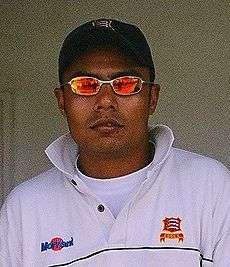 Danish Kaneria made his international debut in 2000 against England at Faisalabad. In January 2002, he took 7 wickets for 77 runs in the Test match against Bangladesh in Bangladesh, which are his career best figures so far in Test cricket. Earlier, in the same season, he had taken 6 wickets in an innings twice against Bangladesh during Bangladesh's tour of Pakistan. In October 2004, he took 10 wickets against Sri Lanka at Karachi, with a second-innings haul of 7/109, setting up Pakistan's 6-wicket win. More recently he has played an important role in Pakistan's Test wins over West Indies, England and India. In December 2009, He took 7/168 in the 1st innings of the 3rd test match against New Zealand at Napier. Pakistan managed to draw that game.
Danish Kaneria made his international debut in 2000 against England at Faisalabad. In January 2002, he took 7 wickets for 77 runs in the Test match against Bangladesh in Bangladesh, which are his career best figures so far in Test cricket. Earlier, in the same season, he had taken 6 wickets in an innings twice against Bangladesh during Bangladesh's tour of Pakistan. In October 2004, he took 10 wickets against Sri Lanka at Karachi, with a second-innings haul of 7/109, setting up Pakistan's 6-wicket win. More recently he has played an important role in Pakistan's Test wins over West Indies, England and India. In December 2009, He took 7/168 in the 1st innings of the 3rd test match against New Zealand at Napier. Pakistan managed to draw that game.
[edit] One Day Internationals
In One Day International cricket, he has been economical so far with an economy rate under 4.8 runs per over. His best bowling in ODIs came against New Zealand in Sri Lanka in 2003. He also had a good series against Zimbabwe in Sharjah just before that.
Success in the one day arena has been more elusive, Pakistan usually opting to play the two spinning all-rounders Shahid Afridi and Shoaib Malik or Saeed Ajmal instead.
[edit] County Cricket
Kaneria has impressed in English county cricket taking 32 wickets in seven championship matches for Ess*x in 2005. Although unable to play English county cricket in 2006 due to Pakistan's tour of England, he returned to play for Ess*x in 2007, taking 107 wickets for the County in all forms of the game [2]. He played for Ess*x again in 2008, although he missed the start of the campaign due to his wife giving birth to their second child. Kaneria suffered a broken finger in Ess*x's LV County Championship Division Two match against Worcestershire at Colchester on August 21, 2008. The bowler was injured attempting to take a catch off Ben Smith. An X-ray confirmed he had broken a finger and he missed the remainder of the 2008 English domestic season
*
royal28 17.04.10 - 02:08pm Bradley James Haddin (born 23 October 1977 in Cowra, New South Wales) is an Australian cricketer. He is a right-handed batsman and wicket-keeper.
Bradley James Haddin (born 23 October 1977 in Cowra, New South Wales) is an Australian cricketer. He is a right-handed batsman and wicket-keeper.
Haddin was selected in the first ever Mercantile Mutual Cup season of 199798 for the Canberra Comets, with whom he began his professional cricketing career. In the 19992000 season, he began playing for the New South Wales Blues[1] in order to pursue further cricketing opportunities. Since then, he has produced several memorable batting innings, including a top score of 133 against Victoria.
In September 2003, he replaced Simon Katich as captain of New South Wales, while Katich was on international duty, and he since been acting-captain on numerous occasions. He has also captained Australia A.
For most of his career he was Australia A wicketkeeper but was drafted into the Australian squad as wicketkeeper if Adam Gilchrist was injured or rested. He made his international debut in a one day international on January 30, 2001 against Zimbabwe in Hobart. He made one stumping and made 13 runs. He was demoted from second choice wicketkeeper for Australia in 2001 by Wade Seccombe and later Ryan Campbell, but reclaimed this position in late 2004.
On 18 September 2006, playing against West Indies at Kuala Lumpur in the DLF Cup, Haddin and Australian captain Mike Hussey put on 165, which at that time was a world-record stand for the sixth wicket in ODIs.[2]
He finally made his Test debut on May 22, 2008 against the West Indies at Kingston, Jamaica,[3] becoming Australia's 400th Test cricketer, after Adam Gilchrist retired.
Haddin was involved in a controversy relating to the dismissal of Neil Broom in an ODI in Perth in February 2009. Broom was given out bowled but replays clearly showed that Haddin's gloves had disturbed the bails. New Zealand captain Daniel Vettori expressed his dissatisfaction with Haddin's actions in not calling Broom back to the wicket. His comment led to an angry retort from Australian captain Ricky Ponting. Ponting defended his team mate saying that Haddin was convinced the ball hit the stumps.[4]
On February 15, 2009, Haddin became acting Australian captain for the Twenty20 against New Zealand after Ricky Ponting was rested and Michael Clarke was injured.
There is a debate as to who would be the successor of Haddin, but Graham Manou and Tim Paine are the frontrunners having already had international experience.
On March 9, 2010, in the third match of the 200910 Chappell-Hadlee one day international series against New Zealand, Haddin scored his second ODI hundred, hitting 110 off 121 ba11s opening the Australian innings.[
*
royal28 25.04.10 - 07:56am
A West Indian cricketer of Indian origin, the left-handed Chanderpaul is known for his doggedness and ability to stick on the wicket for long hours. He is known in the cricketing world for his unorthodox front-on batting stance, although he shifts his body into a more conventional position when he plays the ball, thus making him a prolific scorer on both sides of the wicket. His stance allows him to get most of his runs behind the wicket. Chanderpaul is renowned for playing left arm spin bowlers by getting his pad outside the line of off-stump, and hiding his bat behind the pad, in imitation of a shot, but without the risk of edging the ball.
Chanderpaul's first notable impact on Test cricket was as being the last batting partner of Brian Lara when Lara broke Gary Sobers' record of 365 not out in the fifth and final Test against England in 199394. Lara went on to make 375 before he was caught off Andrew Cadd*ck's bowling, sharing a 219-run stand with Chanderpaul, who was left not out on 75.
Chanderpaul made his first Test century in his 19th Test match after having scored 15 half-centuries in the preceding 18 matches. In the third of a five-Test series against India in 199697, he made 137* at the Kensington Oval in Bridgetown, Barbados. He also featured with his Guyanese counterpart, and current West Indian vice captain Ramnaresh Sarwan, making 104 in chasing a world record 418 to win in the fourth innings of the final Test match versus Australia in 200203.
Chanderpaul's best first class score is 303* versus Jamaica for Guyana, and, despite his reputation as a dogged batsman, he has also made the fourth fastest century in Test cricket, scoring three figures in just 67 ba11s at the Bourda, Guyana, also in the 200203 series against Australia. This innings was twice as quick as his next fastest, and took 267 deliveries fewer than he needed to reach 100 against India the previous season.[2]
He was named captain of West Indies in the first Test versus South Africa in March 2005 in Guyana, after seven senior players including captain Brian Lara were dropped in a sponsorship row. He emulated Graham Dowling to become only the second player to make a double century on debut as a Test captain, scoring an unbeaten 200 and making a sporting declaration in the first Test. It was announced that Lara would return to the team for the second Test, but Chanderpaul would retain the captaincy for the rest of the series. He was named to the squad of twenty for the World XI to face Australia in the Super Test in October 2005, but when the squad was cut to fourteen names in August his name was not mentioned.
An innings-by-innings breakdown of Chanderpaul's Test match batting career, showing runs scored (red bars) and the average of the last ten innings (blue line).
*